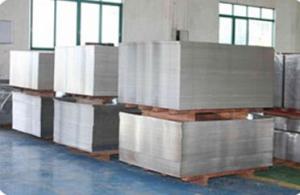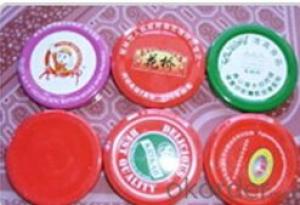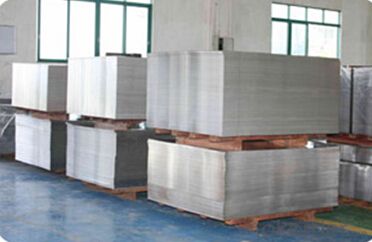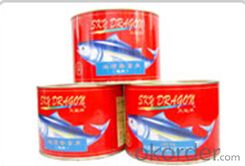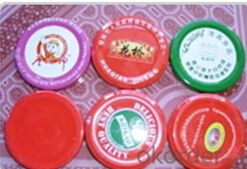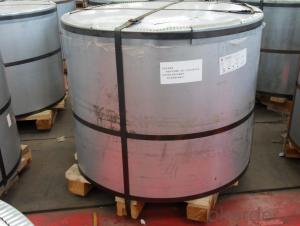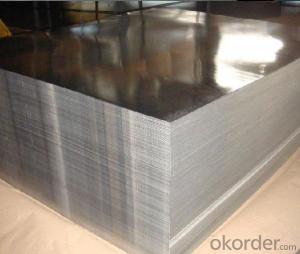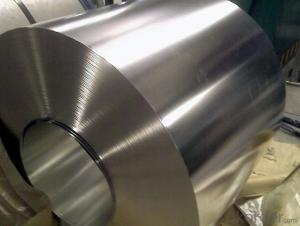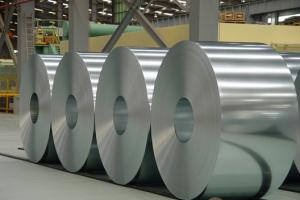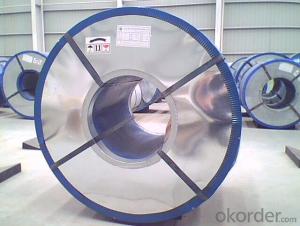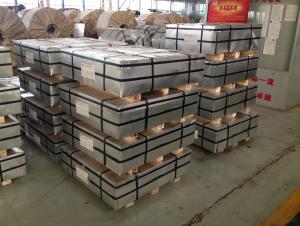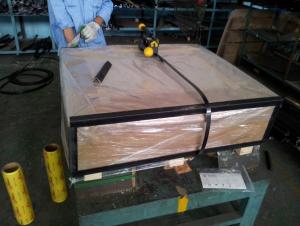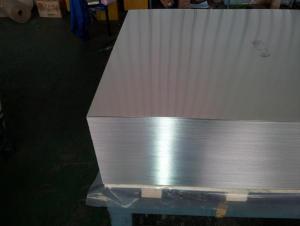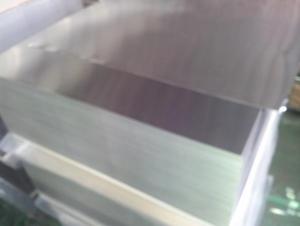Printed Tinplate sheet for edible oil can use
- Loading Port:
- Tianjin
- Payment Terms:
- TT OR LC
- Min Order Qty:
- 15 m.t.
- Supply Capability:
- 1000 m.t./month
OKorder Service Pledge
OKorder Financial Service
You Might Also Like
Prime Quality Printed Tinplate Sheets for edibile oilsl cans use Details:
Minumum Order Quantity: 25 ton Unit: m.t. Loading Port:China Main Port
Supply Ability:10000tons per month Payment Terms:TT or LC
Product Description:
Prime Quality Tinplate Sheets Usage and Applications
Prime Quality Tinplate Sheets is used for making tea cans ,painting cans ,chemical package cans ,food package cans, electrical cable ,battery and metal printing etc.
Prime Quality Tinplate Sheets Specifications
Standard : GB2520-2000 ,JIS G3303
Steel type : SPCC or MR
Coating : 2.8/2.8
Surface: Bright, Stone ,
Thickness:0.18
Width :600MM~1000MM
Temper : T1~T5
Package: tinplate wrapped completely with an inner cover of plastic or waterproof papers with vorners protected with metal angels.
- Q: What are the different types of tin coatings used on tinplate?
- There are primarily three types of tin coatings used on tinplate: electrolytic tinplate (ETP), tin-free steel (TFS), and black plate. ETP is the most common and consists of a thin layer of pure tin electroplated onto the steel substrate, providing excellent corrosion resistance and food compatibility. TFS, on the other hand, is a steel substrate coated with a layer of chromium oxide or chromium oxide and polymer, offering comparable properties to ETP but without the use of tin. Lastly, black plate refers to uncoated steel that can be further processed or coated as per specific requirements.
- Q: How is tinplate coated with organic materials for specific applications?
- Tinplate is coated with organic materials for specific applications through a process known as lacquering. Lacquering involves applying a thin layer of organic material, such as a resin or polymer, onto the surface of the tinplate. This coating provides protection against corrosion, enhances the aesthetic appearance, and improves the adhesion of inks or paints for printing or labeling purposes. The organic coating can be applied through various methods like roll coating, spray coating, or electrostatic deposition, depending on the specific requirements of the application.
- Q: How is tinplate coated with epoxy resin?
- Tinplate is typically coated with epoxy resin through a process known as electrostatic spraying or electrodeposition. In this process, the tinplate is first cleaned and pre-treated to ensure proper adhesion. Then, a positively charged tinplate is immersed in an epoxy resin bath containing negatively charged epoxy particles. The resin particles are attracted to the tinplate surface and adhere electrostatically, forming a uniform coating. The coated tinplate is then cured at high temperatures to harden the epoxy resin, resulting in a durable and corrosion-resistant finish.
- Q: Can tinplate be used for cooking utensils?
- No, tinplate is not suitable for cooking utensils as it can contaminate food with harmful substances.
- Q: What are the regulations and standards related to tinplate packaging?
- The regulations and standards related to tinplate packaging vary depending on the country and industry. However, some common regulations and standards include ensuring the tinplate packaging materials are food-grade and safe for consumers, complying with labeling requirements such as product information and warnings, and meeting environmental regulations for packaging waste management. Additionally, tinplate packaging may need to adhere to specific industry standards like those set by the International Organization for Standardization (ISO) or specific regulatory bodies such as the United States Food and Drug Administration (FDA).
- Q: Does tinplate corrode over time?
- Yes, tinplate can corrode over time. The tin coating on the steel surface of tinplate can gradually deteriorate due to exposure to moisture, acids, or other corrosive substances, leading to the formation of rust or corrosion.
- Q: How does tinplate perform in terms of moisture barrier properties?
- Tinplate demonstrates excellent moisture barrier properties due to its inherent corrosion resistance and the presence of a thin tin coating on its surface. This coating acts as a protective barrier, preventing moisture from penetrating the tinplate and maintaining the integrity of the packaged product.
- Q: Is it necessary for the two cold rolling in the process of tinplate production, such as tempering and cold rolling (also called flatness)?
- The leveling process is only to change the yield platform or to improve the plate shape. Under normal pressure is very small, can not be considered cold rolled in the true sense.
- Q: What are the environmental impacts of using tinplate?
- The environmental impacts of using tinplate include deforestation, energy consumption, and pollution. The production of tinplate often requires large amounts of timber for the production of charcoal, resulting in deforestation and habitat destruction. Additionally, the manufacturing process of tinplate involves high energy consumption, which contributes to greenhouse gas emissions. Furthermore, the use of chemicals in the production and coating of tinplate can lead to water and soil pollution if not properly managed.
- Q: How is tinplate made?
- Tinplate is made by coating thin sheets of steel with a layer of tin through a process called electroplating. The steel sheets are first cleaned and prepared, then immersed in an electrolyte bath containing tin salts. When an electric current is passed through the bath, tin ions are attracted to the steel, forming a thin layer of tin on the surface. This tin coating enhances the steel's resistance to corrosion and provides a shiny and attractive finish.
Send your message to us
Printed Tinplate sheet for edible oil can use
- Loading Port:
- Tianjin
- Payment Terms:
- TT OR LC
- Min Order Qty:
- 15 m.t.
- Supply Capability:
- 1000 m.t./month
OKorder Service Pledge
OKorder Financial Service
Similar products
Hot products
Hot Searches
Related keywords
